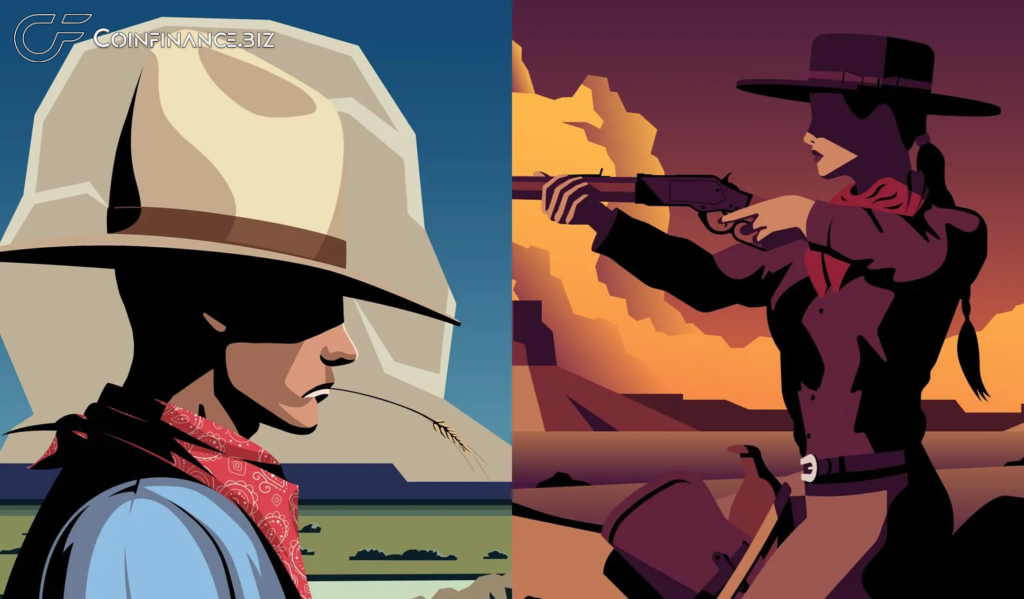The Outlaws, a recently launched NFT collection, has caused a stir in the digital art world due to similarities in style to those of well-known artist Jeremy Booth. The Outlaws are a set of 10,000 profile picture (PFP) NFTs and their public mint sold out at 0.05 Ethereum each, with the cheapest NFT currently trading at 0.067 Ethereum on OpenSea.
However, some collectors are arguing that the collection’s creative approach is too similar to that of Booth, with the accusation being that it is an obvious reproduction of what another artist is doing.

The accusation raises a question: is there a line between plagiarism and inspiration for digital art, and if so, where is that line? The Nature of the Controversy Sadboi, a self-described NFT artist, calls the Outlaws project a moral grey area, and others accuse it of plagiarism. Although some people defend the Outlaws project, citing that it takes inspiration from Frederic Remington, Charles Marion Russell, and Albert Bierstadt and iconic Westerns like “The Good, The Bad and The Ugly” and “The Magnificent Seven,” there is still a debate regarding whether the Outlaws project is too similar to Jeremy Booth‘s Western-themed works, which take a minimalist and cinematic approach to Western-themed art. Some observers point out that elements of both the Outlaws and Booth’s NFTs echo a set of posters created by Works Progress Administration artists between 1938 and 1941. This means that Outlaws could have been inspired by the same source material as Booth, and it is difficult to say where inspiration ends and plagiarism begins.
Outlaws Response Outlaws denies any association with Jeremy Booth, and they claim that their work takes inspiration from other creators. The Outlaws Twitter account points to artists such as Malika Favre and Levente Szabo as examples of creators that laid the groundwork for the PFP collection’s flat style. The Outlaws team also states that Western-themed art is far from new and that they have never tried to represent themselves as part of Booth’s work. In response to Booth’s objection, they explained that they only mentioned him in private messages and tagged him in some of the collection’s promotional content. Furthermore, the Outlaws account retweeted Booth’s statement on April 4, clarifying that he is not affiliated with the project.
To make it clear for the third time I am not affiliated with outlaws in any way.
Them reaching out to folks asking specifically if they were fans of my work is a red flag. https://t.co/3hOzviMDAE
— jeremybooth (@jeremybooth) April 13, 2023
Conclusion While there is some debate about the similarities between Booth’s Western-themed works and the Outlaws collection, the question remains: where is the line between plagiarism and inspiration for digital art? With so many influences and inspirations to draw from, it is not easy to say. The Outlaws project’s success has shown that collectors appreciate the Western-themed style, and it is likely that other artists will create similar collections in the future. Perhaps it is up to collectors to decide which collections are worth investing in and which ones are too similar to other artists’ work. Ultimately, inspiration and originality are subjective, and each artist must decide for themselves what constitutes plagiarism versus inspiration.




